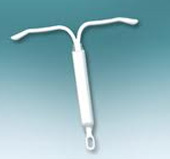IUDs and implants among the safest, most effective forms of contraception
TUESDAY, Feb. 24, 2015 (HealthDay News) — The use of long-acting birth control methods such as intrauterine devices or contraceptive implants jumped five-fold between 2002 and 2011, according to a report published by the U.S. Centers for Disease Control and Prevention’s National Center for Health Statistics as a February data brief.
The authors of the report found that long-acting contraception is most popular for women ages 25 to 34 (11.1 percent said they used a long-acting form of birth control), and less popular among women aged 15 to 24 (5.0 percent) or those between 35 and 44 (5.3 percent)
Women who have already had at least one baby are more likely to use a long-acting contraceptive than women who have not yet had children, the researchers found. There’s also less difference now than in the past in usage rates between racial and ethnic groups.
Among U.S. women aged 15 to 44, the use of these long-term but reversible contraceptives rose from 1.5 percent in 2002 to 7.2 percent in 2011 to 2013, according to the CDC report. Long-acting contraceptives now “represent a fast-growing segment of contraception use by U.S. women,” lead researcher Amy Branum, Ph.D., chief of the reproductive statistics branch at the NCHS, told HealthDay. The rise in use of long-acting contraceptives might “also be beneficial in reducing unintended pregnancies,” especially among women aged 20 to 34, Branum said. She said future research is needed to confirm that, however.
Copyright © 2015 HealthDay. All rights reserved.








